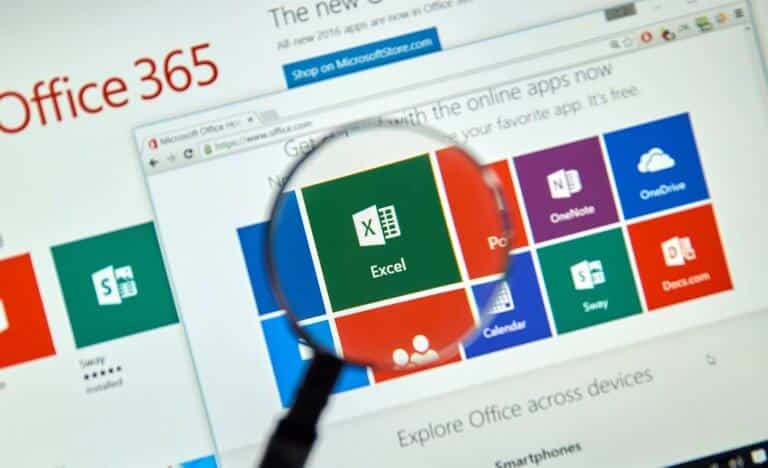One of the most important challenges for those who occupy positions in companies is how to set effective goals.
We know that objectives are necessary in every organization and in any area where performance and results directly affect survival and success.
How to define and achieve balanced goals?
In business, there is a broad consensus on the benefits of setting goals for organizations. And as a consequence, the executives in charge of this task need to prove that they have the necessary skills to set ambitious goals, but that they are within the margins that companies can actually meet.
The importance of ambitious goals
The reason why a company sets objectives is because it seeks to achieve concrete results. However, there is a big difference when we analyze the type of objectives that are set.
Theorists of these aspects indicate that there is a directly proportional relationship between demand and success in all its spheres. In other words, when executives establish a leadership model that pursues demanding objectives, working to achieve them generates a behavior model that powerfully influences the inspiration and motivation of the work team.
However, there are two risks that can be visualized. The first occurs when very little ambitious goals are set, which implies a low level of satisfaction among team members. The other side of the coin is setting very high goals, very difficult to achieve, generating a feeling of discouragement in the team.
Where is the key then? In finding an intermediate point, where there is a balance between high demand and reasonable objectives, attached to reality.
How can balanced goals be achieved?
Beyond common sense and judgment, a leader must take advantage of the technological tools at his disposal to determine effective goals. Also, your job should consider using models that target both long-term and daily tasks.
For the first point, where the base is the achievement of goals within several years, the model known as BHAG (Big Hairy Audacious Goal), created by Jim Collins.
On the other hand, for daily work, where both companies and workers have specific objectives, leaders must choose models that respond to these goals. One of them is known as SMART (Specific, Measurable, Attainable, Relevant, Time-related), proposed by George T. Dorian.
Keys to define effective goals
Once the differentiation between long, medium, and short-term objectives has been made, the key is to define goals that are effective. In each area that makes up a company, this point is fundamental.
The first basic idea that must be considered is that the concept of sustainability should prevail, which allows targeting actions that can be maintained to achieve objectives that have already been achieved before. Secondly, we must consider the concept of improvement, where more demanding objectives are proposed that force the work team to make a greater effort to reach higher levels on the company’s scale of achievement.
Under this foundation, and with the purpose of maintaining the commitment and understanding of the team, we identify the factors to follow to define effective goals:
- Define reward for efforts
Although companies seek to form highly motivated teams that have the company “under the skin”, not all of the members of the team will work to achieve the objectives only under an emotional commitment. There will also be those that will be focused on receiving a reward proportional to the magnitude and complexity of the goal achieved, where there is also an ingredient related to the impact that this generates for the company.
Given this reality, those who exercise the leadership position should consider establishing in advance the type of award that will be given to workers in exchange for the achievements reached. The way to motivate professionals can be through payments and other monetary incentives to other types of rewards, such as benefits, greetings and other possibilities.
- Inspire the team using positive emotions
Any objective that a company wants to achieve requires actions that inspire workers. And as goals become more difficult to achieve, emotions come to play a more prominent role in awakening that inspiration that comes from those who exercise leadership.
Regardless of the objective pursued, be it to keep the company on track and pace or make a leap towards more complex achievements, leaders must convey positive emotions.
This fuels trust and recognition in the group, through emotions that convey a message related to the importance of self-improvement, that every effort, no matter how small, is well valued and leads the entire organization to achieve something which will make everyone proud, and for which they will be rewarded.
Therefore, the idea is to work on emotions by showing positive but sincere reactions. It is key to generate a culture of achievement, reiterating the benefits that will be achieved at the collective and individual level if the goal set is achieved.
It is also important to reinforce the concept of resilience, considering that on the way there will be various difficulties that must be overcome to achieve the goals. Aspects such as pride and self-improvement should also be included at this point, as they help to emphasize the idea that achieving goals requires small advances that require everyone’s effort, which translates into a feeling of pride in being giving the maximum to reach the desired level.
- Perform follow-up
The fulfillment of the objectives does not end with a clear definition of these and the delivery of elements for the team to achieve its mission. Perhaps the greatest challenge remains, which is to do the work necessary to reach the goal.
And this requires not only the commitment of the team, but maintaining it throughout the entire process. In a company, it is important to mentally work on the idea of achieving the objectives, but also to monitor and constantly update the progress of the work that will lead the company to reach the goals set by its leaders.
Monitoring through tables and other indicators that make it possible to note the fulfillment of each individual and collective task, highlight important milestones, hold periodic meetings, are ways of keeping track of what is being done at any given time. This allows to have a general and specific vision of each action and to introduce corrections when the situation warrants it.
The use of technological tools is essential too. First, because each member can contribute data to a general background collection base that can be evaluated. Second, because through information platforms news can be transmitted, or key messages reinforced, that strengthen commitment and keep the team working in a cohesive way, involved in the initiative.
- Progress evaluation
Finally, any process that aims to achieve objectives within a company must be subjected to some type of evaluation.
Only through this type of procedure executives have the possibility of establishing a relationship between what was originally thought and what will be obtained, once the process is finished.
As each stage progresses, gathering the necessary information and data, the results that are being partially obtained can be measured as well as how they are shaping up to achieve the goal. Thus, corrections and changes can be defined, or simply keep what was planned according to the original idea.
Exercising leadership is a fundamental mission in terms of meeting objectives within a company. The clarity to establish those goals, the understanding of the importance of both their defining and instilling in a work team, are aspects that should be in the foreground when drawing up a plan about it.
In the same way, it is key to set effective objectives, which the team can meet and for which it may work with commitment and enthusiasm. And for that, there must be support of tools that allow gathering data to help make decisions that can be crucial both to maintain the course of action or to correct it in case of any deviation or mistake.







